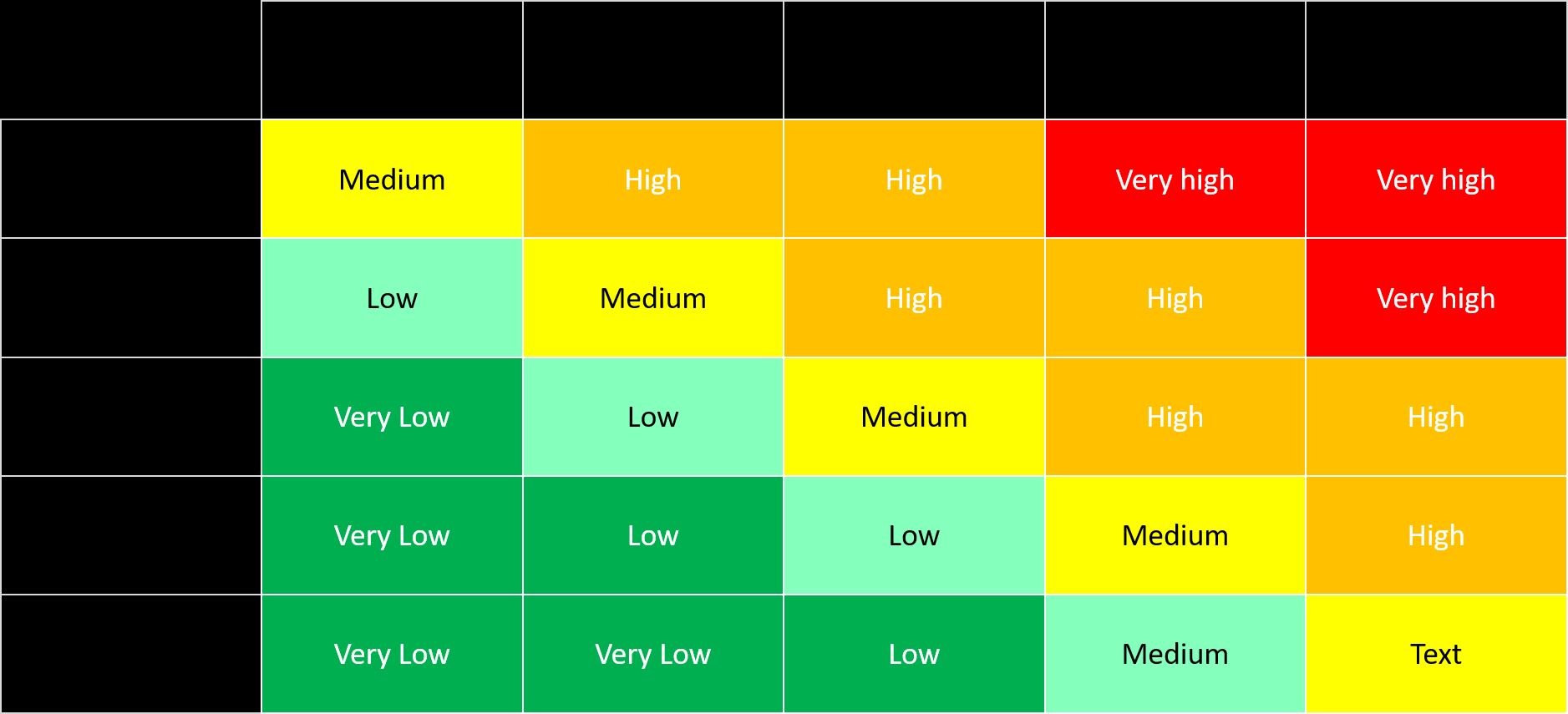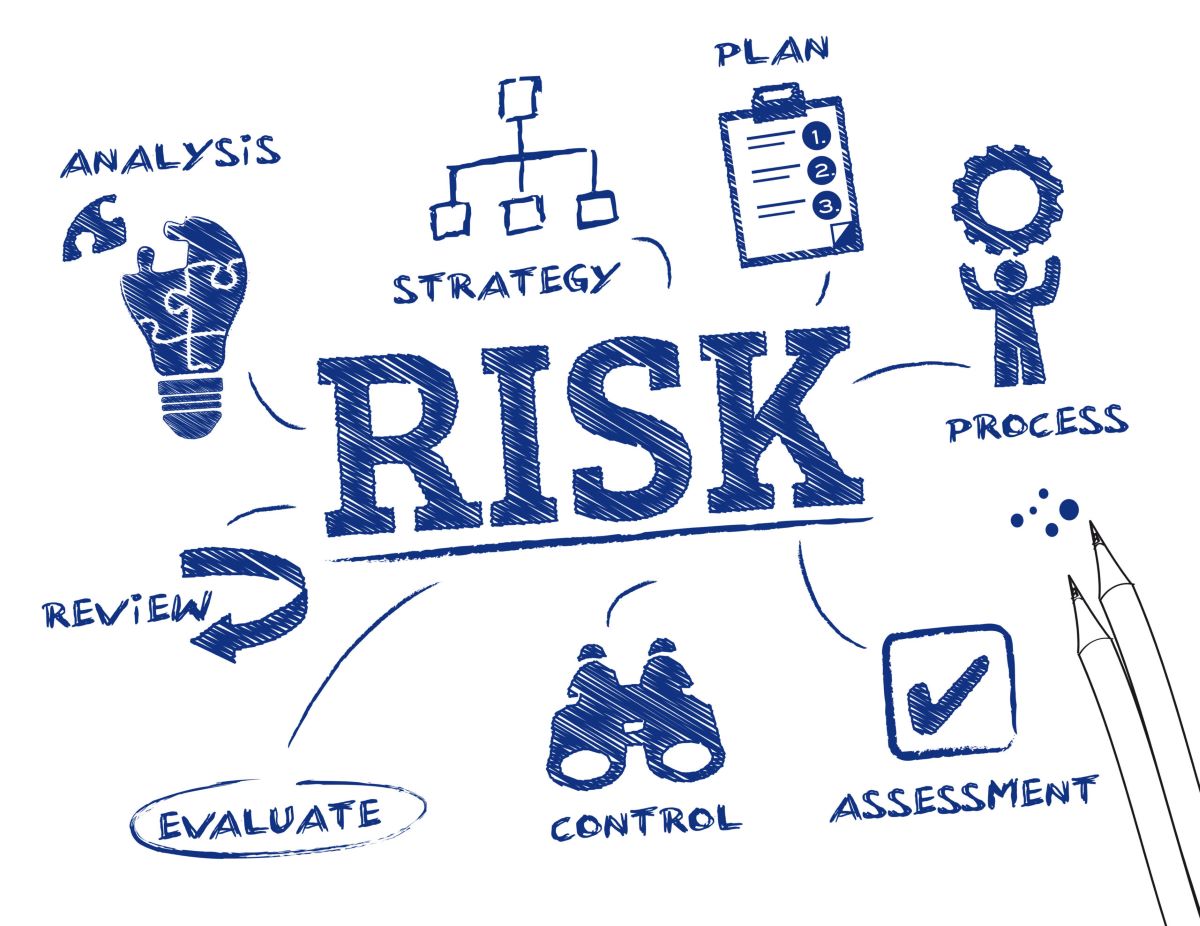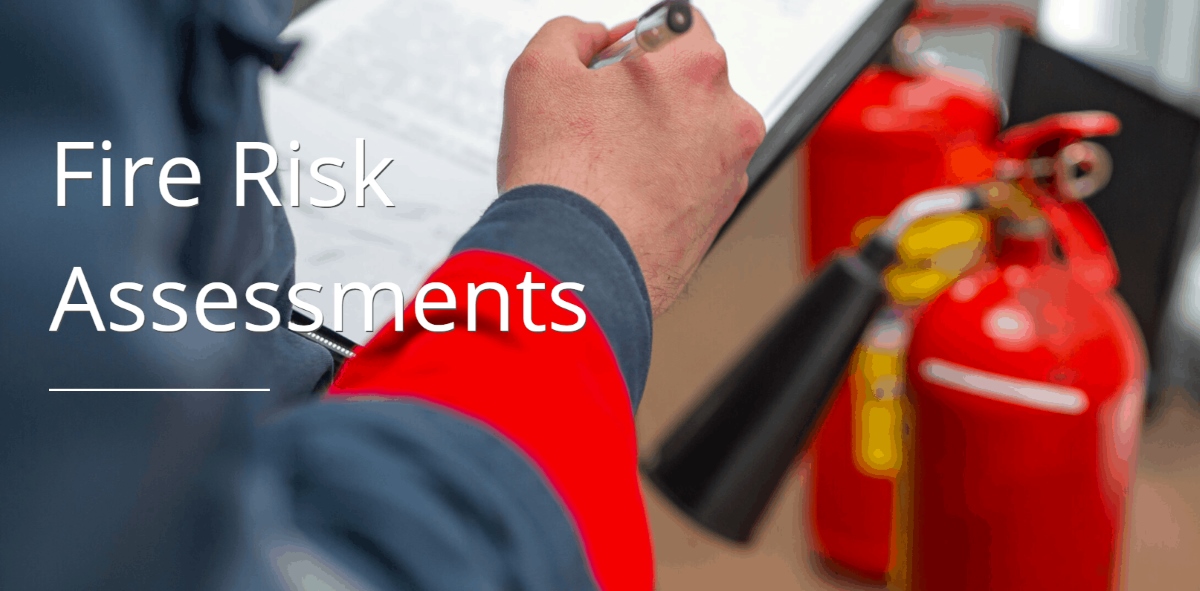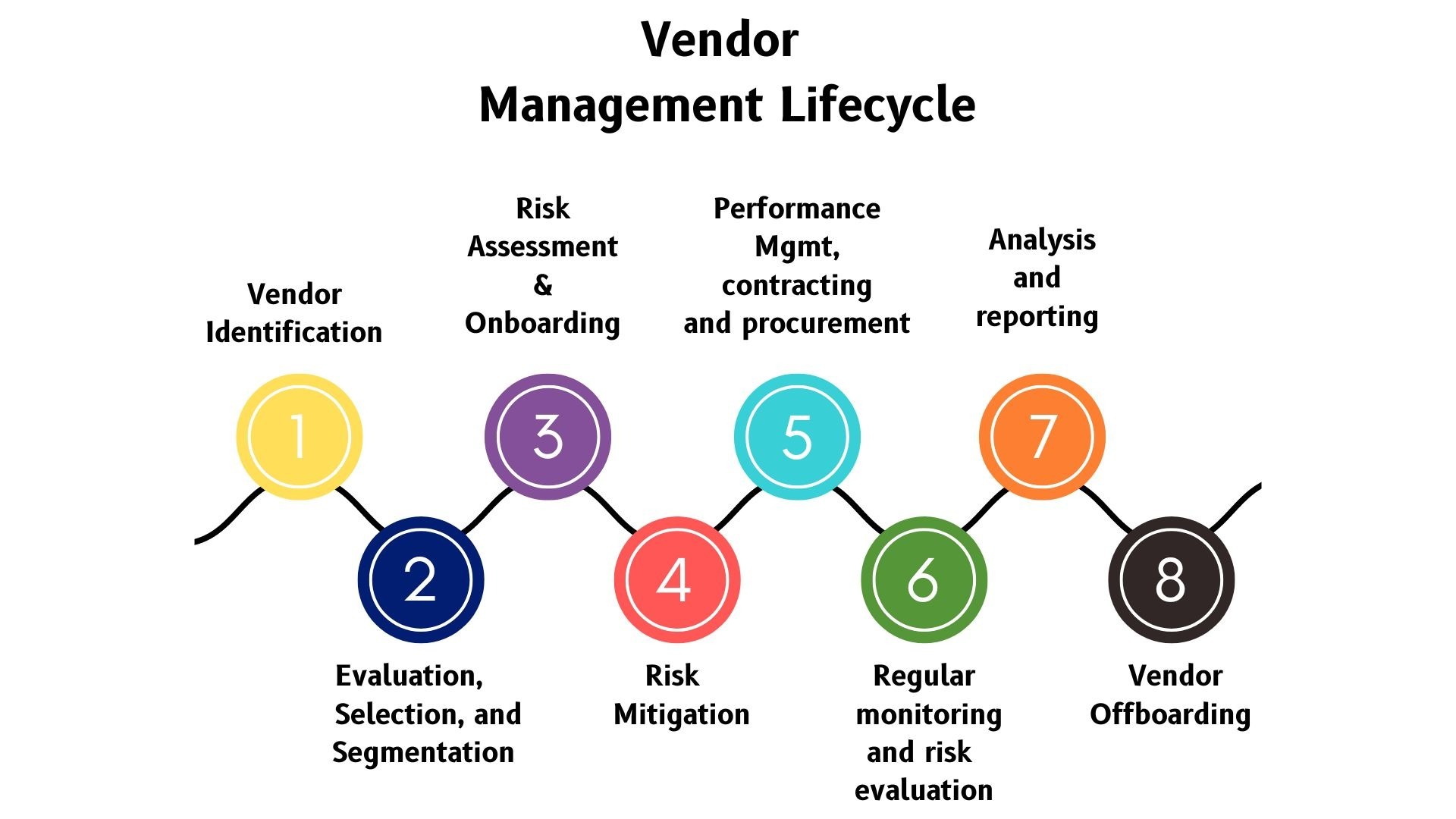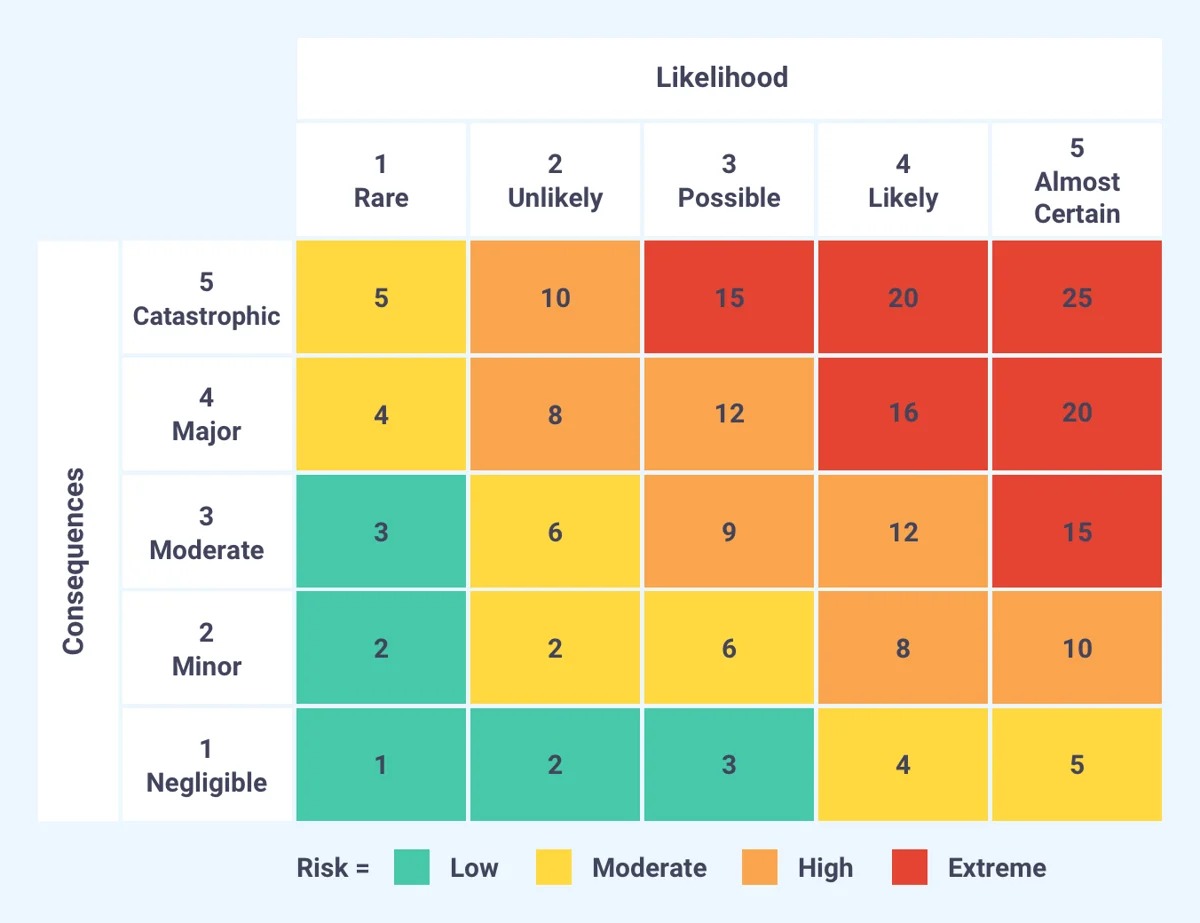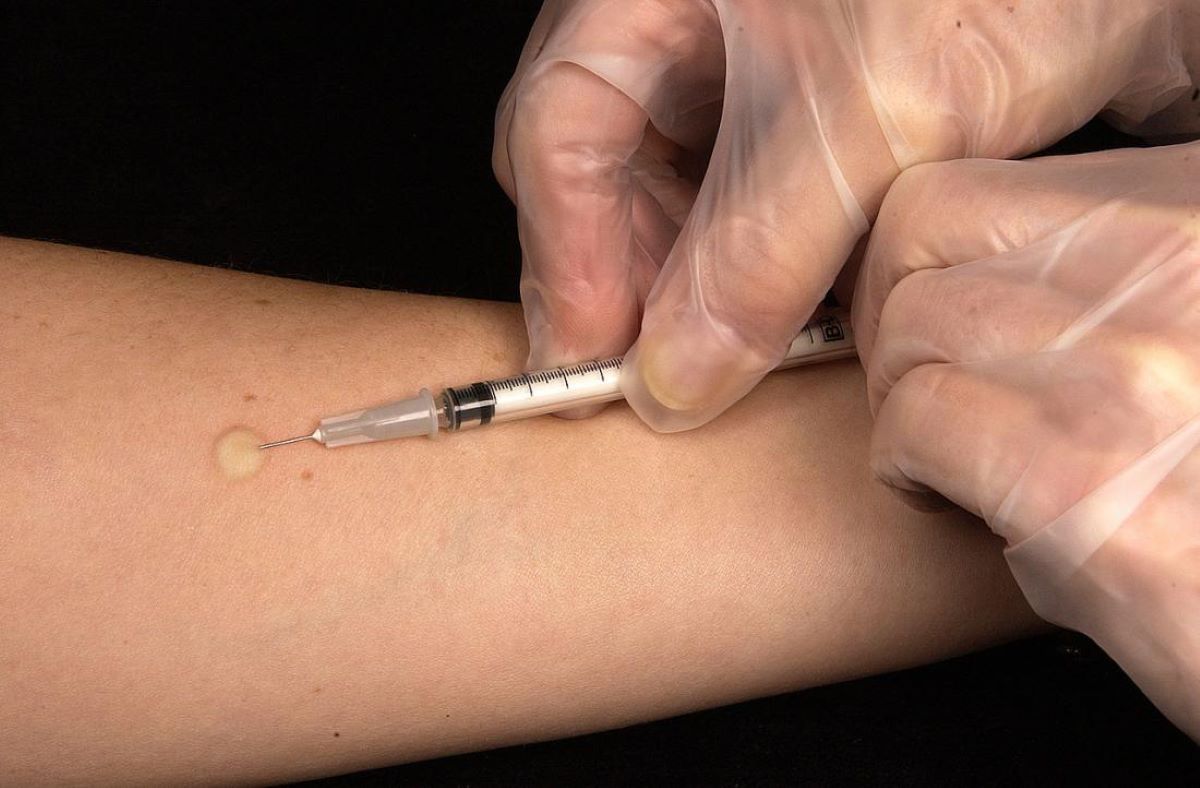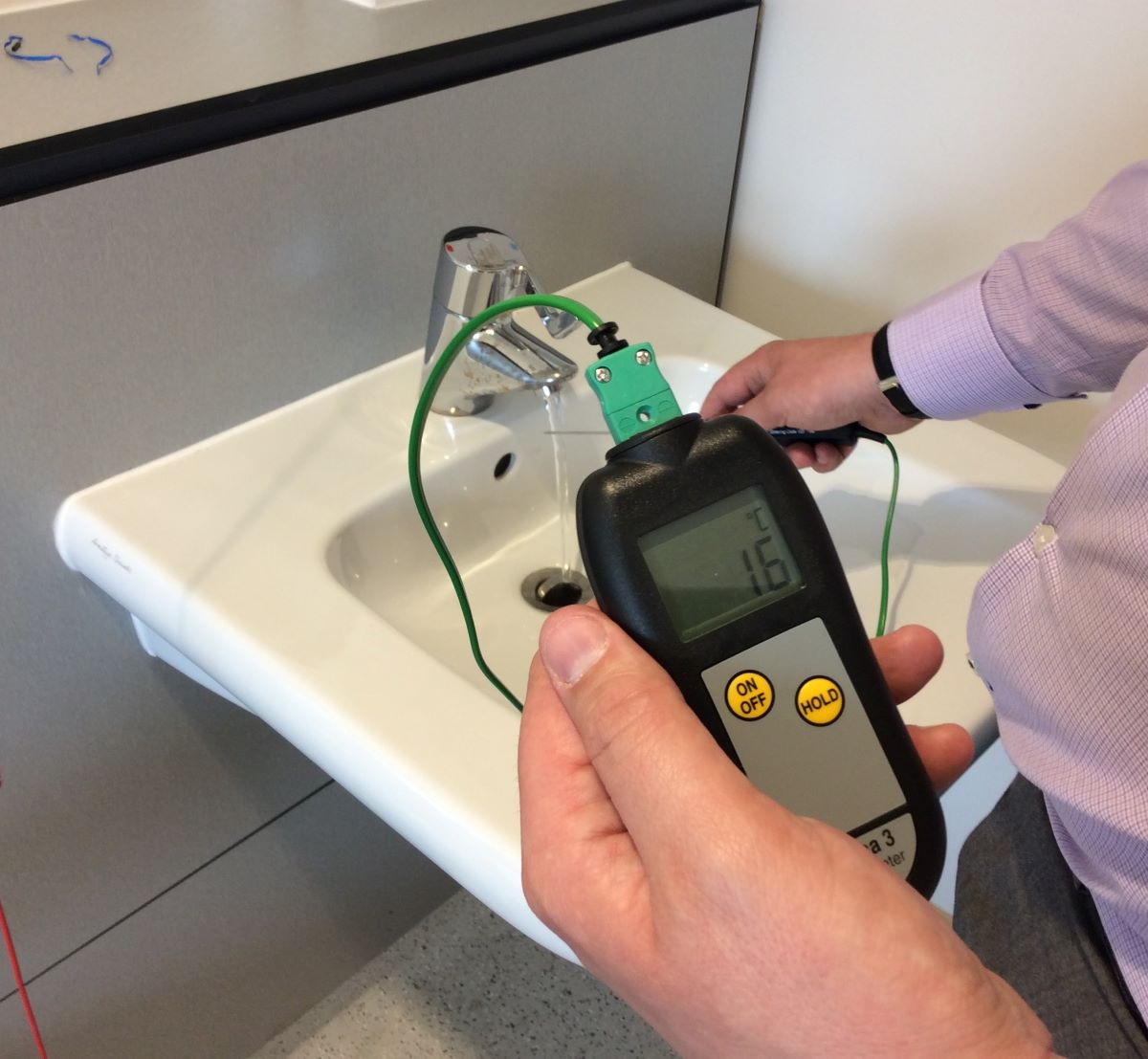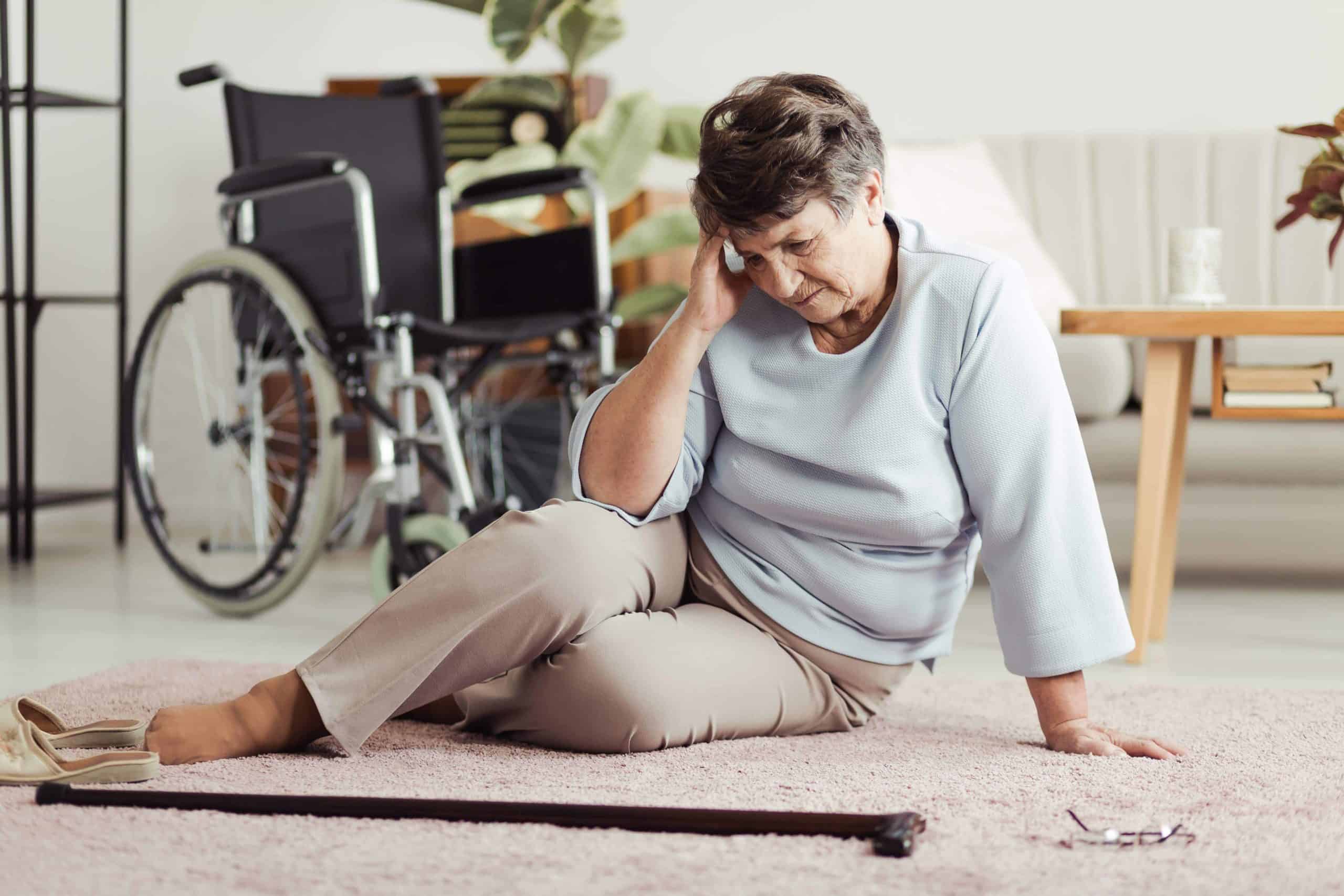

Finance
What Is A Fall Risk Assessment
Published: January 15, 2024
Learn the importance of conducting a fall risk assessment in finance. Discover how evaluating potential hazards can mitigate financial risks and safeguard investments.
(Many of the links in this article redirect to a specific reviewed product. Your purchase of these products through affiliate links helps to generate commission for LiveWell, at no extra cost. Learn more)
Table of Contents
- Introduction
- Definition of Fall Risk Assessment
- Importance of Fall Risk Assessments
- Components of a Fall Risk Assessment
- Common Tools and Methods Used in Fall Risk Assessments
- Factors Considered in Fall Risk Assessments
- Benefits of Fall Risk Assessments
- Challenges and Limitations of Fall Risk Assessments
- Guideline for Conducting a Fall Risk Assessment
- Conclusion
Introduction
A fall risk assessment is a systematic evaluation that helps identify individuals who are at risk of falling. It involves assessing various factors, such as medical conditions, physical abilities, environmental hazards, and medication usage, to determine the likelihood of falls and to implement appropriate preventive measures.
Falls are a significant concern, particularly among older adults, as they can lead to serious injuries, reduced mobility, and a decline in overall quality of life. According to the Centers for Disease Control and Prevention (CDC), falls are the leading cause of fatal and non-fatal injuries among older adults in the United States.
Conducting fall risk assessments is crucial in mitigating the risk of falls and preventing adverse outcomes. These assessments provide healthcare professionals with valuable information to develop personalized interventions and strategies to address and manage fall risks.
By identifying individuals at risk of falling, healthcare providers can implement proactive measures to reduce falls and their associated complications. This can include interventions such as exercise programs, medication adjustments, modification of living environments, and education on fall prevention strategies.
Moreover, fall risk assessments are not limited to older adults; they can also be beneficial in other populations, such as individuals with certain medical conditions, individuals undergoing rehabilitation, or those in certain work environments with increased fall hazards.
In this article, we will explore the importance of fall risk assessments, the components involved in conducting these assessments, common tools and methods used, factors considered in the assessments, the benefits they offer, as well as the challenges and limitations healthcare professionals may encounter when conducting fall risk assessments.
By understanding the importance of fall risk assessments and the strategies involved, healthcare professionals can better address fall risks, improve patient safety, and enhance overall quality of care.
Definition of Fall Risk Assessment
A fall risk assessment is a systematic process used to evaluate an individual’s risk of experiencing a fall. It involves a comprehensive evaluation of various factors that contribute to falls, including medical history, physical capabilities, cognitive function, medication usage, and environmental hazards. The goal of a fall risk assessment is to identify individuals who are at an increased risk of falling and to provide appropriate interventions to prevent falls.
During a fall risk assessment, healthcare professionals use standardized tools and methods to collect information and assess the individual’s risk factors. These assessments can be performed in various healthcare settings, including hospitals, rehabilitation centers, nursing homes, and even in community outreach programs.
The assessment typically involves gathering information through interviews with the individual, observation of their physical abilities and mobility, reviewing their medical history and current medications, and assessing the safety of their living environment. Additionally, healthcare professionals may use specific screening tools and questionnaires, such as the Timed Up and Go Test, the Berg Balance Scale, or the Falls Efficacy Scale, to further evaluate the individual’s risk.
Based on the gathered information and assessment results, healthcare professionals can determine the individual’s level of fall risk and develop tailored strategies to reduce their risk. These strategies may include exercise programs to improve strength and balance, medication adjustments to address side effects that increase fall risk, modifications to the living environment to eliminate hazards, and education on fall prevention techniques.
It is important to note that fall risk assessments are not a one-time event but are typically conducted regularly or when there is a change in the individual’s condition or circumstances. This ongoing assessment allows healthcare providers to monitor changes in fall risk and intervene appropriately to maintain the individual’s safety.
In summary, a fall risk assessment is a comprehensive evaluation process that aims to identify individuals who are at an increased risk of falling. By assessing various factors that contribute to falls, healthcare professionals can develop personalized interventions to minimize fall risk and improve patient safety.
Importance of Fall Risk Assessments
Fall risk assessments play a crucial role in healthcare settings by identifying individuals who are at a higher risk of experiencing falls. Understanding the importance of these assessments can help healthcare professionals take proactive measures to prevent falls and improve patient safety. Here are some key reasons why fall risk assessments are essential:
- Early Identification of High-Risk Individuals: Fall risk assessments help healthcare professionals identify individuals who are at a higher risk of falling. By recognizing these individuals early on, healthcare providers can implement targeted interventions and preventive measures to reduce their risk of falls. This allows for early intervention and reduces the chances of injuries or complications due to falls.
- Promotion of Patient Safety: Falls can have severe consequences, including fractures, head injuries, and reduced functional independence. By conducting regular fall risk assessments, healthcare providers can proactively address potential fall hazards and make necessary modifications to the environment. This promotes patient safety and reduces the likelihood of falls occurring.
- Personalized Care Planning: Fall risk assessments provide valuable information about an individual’s specific risk factors, allowing for personalized care planning. Healthcare professionals can tailor interventions based on the individual’s needs, such as implementing exercise programs to improve balance and strength, adjusting medications to minimize side effects that contribute to falls, and providing education on fall prevention strategies. This approach ensures that interventions are targeted and effective.
- Enhanced Quality of Life: Falls can lead to physical injuries, pain, and fear of falling, which can significantly impact an individual’s quality of life. By identifying and addressing fall risks through assessments, healthcare professionals can help individuals maintain their independence, mobility, and overall well-being. This contributes to an improved quality of life and fosters a sense of confidence and security.
- Reduced Healthcare Costs: Falls and fall-related injuries can result in hospitalizations, emergency room visits, and other healthcare expenses. By conducting fall risk assessments and implementing preventive measures, healthcare providers can lower the incidence of falls and subsequently reduce healthcare costs. The cost-effectiveness of fall risk assessments lies in preventing falls rather than treating their consequences.
Overall, fall risk assessments are vital in preventing falls, promoting patient safety, and enhancing the quality of care. By identifying high-risk individuals and implementing tailored interventions, healthcare professionals can reduce the occurrence of falls and the associated negative outcomes. Fall risk assessments should be incorporated into routine healthcare practice to ensure comprehensive and proactive care for individuals at risk of falling.
Components of a Fall Risk Assessment
A comprehensive fall risk assessment consists of various components that healthcare professionals consider to evaluate an individual’s risk of falling. These components provide a holistic view of the individual’s health status, physical abilities, cognitive function, and environmental factors that may contribute to falls. Here are the key components typically included in a fall risk assessment:
- Medical History: This component involves gathering information about the individual’s medical conditions, past falls, and any related surgeries or treatments. An individual’s medical history can provide insights into underlying conditions or medications that may increase the risk of falls.
- Physical Examination: Healthcare professionals assess the individual’s physical abilities through a thorough examination. This assessment includes evaluating strength, balance, gait, mobility, and muscle tone. They may also assess joint function and sensation to identify any physical limitations or impairments that may contribute to fall risk.
- Cognitive Function: Evaluating cognitive function is crucial in assessing an individual’s fall risk. Memory, attention, and decision-making abilities play a significant role in an individual’s ability to identify and react to potential fall hazards. Healthcare professionals may use standardized cognitive tests to assess cognitive function.
- Medication Review: Certain medications, such as sedatives, antihypertensives, and psychotropic drugs, can increase the risk of falls due to side effects such as dizziness or impaired balance. Healthcare providers review the individual’s medication regimen to identify any medications that may contribute to fall risk and may consider adjusting the dosage or prescribing alternatives.
- Vision Assessment: Visual impairments can have a significant impact on an individual’s balance and ability to detect hazards. Healthcare professionals assess vision and may refer individuals with vision impairments to ophthalmologists or optometrists for further evaluation and management.
- Environmental Evaluation: Identifying potential hazards in the living environment is an essential part of fall risk assessment. Healthcare professionals assess the individual’s home or living environment for factors such as poor lighting, obstacles, uneven surfaces, or inadequate support devices. Modifying the environment to mitigate these hazards is an integral part of fall prevention.
- Fall History and Fear of Falling: In addition to evaluating past falls, healthcare professionals also assess an individual’s fear of falling. Fear of falling can limit activity levels and contribute to a decline in physical abilities. Assessing fall history and fear of falling provides valuable information for developing interventions that address these concerns.
- Social Support and Mobility: Understanding an individual’s social support network and their level of mobility outside of their home environment is important. Lack of social support or limited mobility can increase the risk of falls, particularly for individuals who live alone or have limited access to assistance.
By considering these components in a fall risk assessment, healthcare professionals gain a comprehensive understanding of an individual’s fall risk profile. This information allows for personalized interventions and strategies to be implemented, reducing the risk of falls and promoting safety and well-being.
Common Tools and Methods Used in Fall Risk Assessments
Fall risk assessments employ a range of tools and methods to systematically evaluate an individual’s risk of falling. These tools help healthcare professionals gather objective data and provide a standardized approach to assessing fall risk. Here are some commonly used tools and methods in fall risk assessments:
- Timed Up and Go Test (TUG): The TUG test assesses an individual’s mobility and balance. It involves timing how long it takes for an individual to stand up from a chair, walk a short distance, turn around, walk back, and sit back down. Longer times indicate a higher risk of falling.
- Berg Balance Scale (BBS): The BBS is a performance-based assessment that evaluates an individual’s balance and physical abilities. It consists of 14 tasks, such as standing unsupported, transferring, and maintaining balance in different positions. The scored results help assess an individual’s fall risk.
- Tinetti Performance-Oriented Mobility Assessment (POMA): The POMA assesses an individual’s gait and balance. It includes tasks such as sitting down and standing up, standing balance, and walking. The test is scored on factors like balance, gait, and overall mobility, providing insight into fall risk.
- Falls Efficacy Scale (FES): The FES is a questionnaire that measures an individual’s perceived level of confidence in performing daily activities without falling. It assesses the fear of falling and can help identify individuals who may have limitations due to fear, even if they have no physical impairments.
- Frailty Assessment: Frailty assessments evaluate an individual’s overall physical and cognitive decline, which may increase the risk of falls. Common frailty assessments include the Fried Frailty Index, Clinical Frailty Scale, or the Edmonton Frail Scale. These assessments help identify individuals who require additional support and interventions to prevent falls.
- Fall Risk Questionnaires: Various questionnaires, such as the Hendrich II Fall Risk Model or the STRATIFY tool, are used to assess individual fall risk based on specific indicators, such as medical conditions, mobility, medication use, and fall history. These questionnaires provide a standardized approach to assessing fall risk.
- Gait and Balance Assessments: Assessing an individual’s gait and balance is crucial in identifying fall risk. This can be done through observation and subjective evaluation by healthcare professionals. They may assess factors such as stride length, posture, and general stability during walking and balance tasks.
- Environmental Assessments: Evaluating the individual’s living environment is an important aspect of fall risk assessments. Healthcare professionals may use checklists or home safety assessments to identify potential hazards, such as poor lighting, slippery surfaces, or obstacles, that may contribute to falls.
By utilizing these tools and methods, healthcare professionals can gather objective data and standardized measurements to assess an individual’s fall risk. This information guides the development of targeted interventions and preventive strategies to reduce the risk of falls and enhance patient safety. It is important for healthcare professionals to select and use appropriate tools based on the specific needs and characteristics of the individual being assessed.
Factors Considered in Fall Risk Assessments
During fall risk assessments, healthcare professionals evaluate various factors that may contribute to an individual’s risk of falling. Considering these factors provides a comprehensive understanding of the individual’s fall risk profile and helps determine appropriate interventions. Here are the key factors commonly considered in fall risk assessments:
- Previous Falls: A history of previous falls is a significant risk factor for future falls. Healthcare professionals inquire about the circumstances, frequency, and consequences of past falls to assess the individual’s risk.
- Medical Conditions: Certain medical conditions can increase an individual’s fall risk. These may include cardiovascular diseases, neurological disorders, arthritis, visual impairments, or cognitive impairments. Healthcare professionals consider the presence and severity of these conditions in fall risk assessments.
- Medications: Some medications can cause side effects that contribute to falls, such as dizziness, drowsiness, or impaired balance. Healthcare professionals review an individual’s medication list to identify any drugs that may increase fall risk. Adjustments or modifications to medications may be considered to mitigate this risk.
- Impaired Balance and Gait: Balance and gait abnormalities, such as muscle weakness, difficulties in coordination, or impaired stability, are significant risk factors for falls. Healthcare professionals assess an individual’s balance, stability, and gait to determine their fall risk.
- Mobility Limitations: Mobility limitations, such as difficulty with walking, transfers, or changes in body positioning, can increase the risk of falls. Healthcare professionals assess an individual’s ability to move independently and identify any limitations that may contribute to fall risk.
- Fear of Falling: Fear of falling can affect an individual’s activities and mobility, leading to a decline in physical abilities and an increased risk of falls. Healthcare professionals assess an individual’s level of fear of falling to address any psychological or emotional factors that may contribute to fall risk.
- Sensory Impairments: Visual impairments, hearing loss, or proprioceptive deficits can affect an individual’s ability to detect and respond to fall hazards. Healthcare professionals assess these sensory impairments to determine their impact on fall risk and recommend appropriate interventions.
- Environmental Hazards: The physical environment can present hazards that increase the risk of falls. Healthcare professionals evaluate an individual’s living environment, identifying potential hazards such as poor lighting, uneven surfaces, clutter, or inadequate handrails. Modifying the environment to enhance safety is an important aspect of fall prevention.
- Functional Limitations: Assessing an individual’s functional abilities, such as the ability to perform activities of daily living (ADLs) or instrumental ADLs (IADLs), provides insights into their fall risk. Healthcare professionals evaluate whether any functional limitations exist that may contribute to fall risk.
- Psychosocial Factors: Psychosocial factors, such as depression, anxiety, stress, or social isolation, can impact an individual’s fall risk. These factors may affect an individual’s motivation, engagement in fall prevention strategies, and overall well-being. Evaluating these factors helps identify potential risk factors and design appropriate interventions.
By considering these factors in fall risk assessments, healthcare professionals gain a comprehensive understanding of an individual’s fall risk profile. This allows for personalized interventions and strategies to be implemented, reducing the risk of falls and promoting safety and well-being.
Benefits of Fall Risk Assessments
Fall risk assessments offer numerous benefits in the healthcare setting by identifying individuals who are at a higher risk of falling and implementing preventive measures. Understanding the benefits of fall risk assessments can help healthcare professionals recognize their importance and prioritize their implementation. Here are some key benefits of conducting fall risk assessments:
- Early Intervention: Fall risk assessments enable early identification of individuals at risk of falling. Identifying high-risk individuals early allows healthcare professionals to implement targeted interventions and preventive measures promptly, reducing the likelihood of falls and their associated complications.
- Precise and Personalized Care: Fall risk assessments provide healthcare professionals with valuable information about an individual’s specific risk factors. This information allows for personalized care planning and the development of tailored interventions. By targeting specific risk factors, healthcare professionals can provide precise interventions such as exercise programs, medication adjustments, or environmental modifications.
- Improved Patient Safety: Conducting fall risk assessments contributes to enhancing patient safety by identifying individuals who are at risk of falling. Implementing preventive strategies and interventions based on these assessments reduces the chance of falls occurring and minimizes the associated injuries and complications.
- Enhanced Quality of Care: Fall risk assessments contribute to the overall quality of care provided to individuals. By identifying fall risks and implementing preventive measures, healthcare professionals can optimize patient outcomes and experiences. Improved quality of care leads to enhanced patient satisfaction and can positively impact healthcare provider reputation.
- Reduced Healthcare Costs: Falls and fall-related injuries can result in significant healthcare costs. By conducting fall risk assessments and implementing preventive measures, healthcare providers can reduce the incidence of falls and subsequent hospitalizations or emergency room visits. This proactive approach can yield substantial cost savings for healthcare systems and individuals.
- Promotion of Independence and Well-being: Fall risk assessments, followed by appropriate interventions, help individuals maintain their independence and overall well-being. By reducing the risk of falls, individuals can maintain their ability to perform activities of daily living and engage in social and recreational activities without fear or limitations.
- Empowerment and Education: Through fall risk assessments, healthcare professionals can educate individuals and their caregivers about fall prevention strategies. These educational sessions raise awareness about risk factors and provide practical guidance on how to prevent falls. Empowering individuals with knowledge and skills promotes active participation in their own fall prevention and safety.
- Monitoring and Adaptation: Fall risk assessments are not one-time events but should be conducted regularly or when there are changes in an individual’s condition or circumstances. Regular assessments allow healthcare professionals to monitor changes in fall risk over time and make necessary adaptations to interventions and strategies if needed.
By recognizing and embracing the benefits of fall risk assessments, healthcare professionals can prioritize fall prevention as an integral part of patient care. This proactive approach leads to improved patient outcomes, reduced healthcare costs, and enhanced overall quality of care.
Challenges and Limitations of Fall Risk Assessments
While fall risk assessments are valuable tools in identifying individuals at risk of falling, they do come with certain challenges and limitations. Recognizing these challenges is important for healthcare professionals to ensure a comprehensive and accurate assessment of fall risk. Here are some common challenges and limitations of fall risk assessments:
- Subjectivity: Fall risk assessments often involve subjective observations and self-reported information. This subjective nature can introduce biases and variations in the assessment process, particularly if different healthcare professionals assess the same individual. Standardized tools and protocols can help minimize subjectivity and enhance consistency.
- Multifactorial Nature of Falls: Falls are often the result of a combination of various factors, including medical conditions, medications, environmental hazards, and physical impairments. Assessing all these factors comprehensively within a single assessment can be challenging. It requires a multidisciplinary approach and collaboration among healthcare professionals to address all the contributing factors effectively.
- Integration of Cognitive Factors: Cognitive impairments, such as memory loss or decision-making difficulties, can impact an individual’s risk of falling. Assessing and incorporating cognitive factors into fall risk assessments can be challenging, especially if standardized cognitive assessments are not readily available or if the individual’s cognitive decline is subtle and not easily captured in assessments.
- External Factors: External factors, such as the physical environment, social support, and individual behavior, can influence an individual’s risk of falling. While fall risk assessments attempt to consider these factors, accurately capturing their impact can be challenging. Consideration of the individual’s living environment and collaboration with occupational therapists or home health services can help address these external factors more effectively.
- Limited Predictive Accuracy: No assessment tool can accurately predict every fall, as falls can be unpredictable in nature. Fall risk assessments provide estimates of an individual’s risk level based on known risk factors, but they cannot definitively predict specific fall events. Constant vigilance and ongoing monitoring of an individual’s fall risk are necessary to address their changing circumstances and factors contributing to their fall risk.
- Underreporting of Falls: Individuals may underreport their falls due to embarrassment, fear of consequences, or memory problems. This can potentially affect the accuracy of fall risk assessments if the reported fall history is incomplete or inaccurate. Healthcare professionals need to establish trust and create a safe environment that encourages open and honest communication to ensure accurate assessment of fall history.
- Resource Constraints: Conducting comprehensive fall risk assessments can require significant time and resources, especially in busy healthcare settings. Limited time, staffing, and access to specialized equipment or assessments can pose challenges in conducting thorough and timely assessments.
- Adherence to Recommendations: Even with accurate fall risk assessments and appropriate interventions, individuals may not always adhere to the recommended interventions and fall prevention strategies. Factors such as personal beliefs, motivation, or access to resources can influence an individual’s adherence. Continued education, support, and follow-up are crucial to promote sustained adherence to fall prevention recommendations.
Despite these challenges and limitations, fall risk assessments remain valuable tools in identifying individuals at risk of falling and implementing interventions to prevent falls. Healthcare professionals should recognize these limitations, strive for a holistic approach to fall prevention, and continually reassess and adapt interventions based on the individual’s changing circumstances and needs.
Guideline for Conducting a Fall Risk Assessment
Conducting a fall risk assessment involves a structured approach to systematically evaluate an individual’s risk of falling. Following a guideline ensures consistency, thoroughness, and accuracy in the assessment process. Here are some key steps to consider when conducting a fall risk assessment:
- Patient Identification: Identify individuals who may benefit from a fall risk assessment, such as older adults, individuals with specific medical conditions, or those who have a history of falls or mobility impairments.
- Gather Information: Collect relevant information about the individual, including their medical history, current medications, and any previous falls. This can be done through interviews, medical records review, or consultation with other healthcare professionals involved in the individual’s care.
- Physical Examination: Perform a thorough physical examination, assessing strength, balance, gait, mobility, and joint function. Utilize standardized tools and tests, such as the Timed Up and Go Test or the Berg Balance Scale, to obtain objective measurements and assess the individual’s physical abilities accurately.
- Cognitive Assessment: Evaluate cognitive function using validated screening tools or assessments. This helps identify any cognitive impairments that may contribute to the individual’s fall risk.
- Environmental Evaluation: Conduct an assessment of the individual’s living environment to identify potential hazards that may increase fall risk. Pay attention to factors such as lighting, flooring, furniture arrangement, and accessibility of support devices.
- Medication Review: Review the individual’s medication regimen, consulting with a pharmacist if necessary, to identify medications that may increase fall risk due to side effects such as dizziness or impaired balance. Consider dosage adjustments or alternative medications as appropriate.
- Functional Assessment: Assess the individual’s functional abilities, including activities of daily living (ADLs) and instrumental activities of daily living (IADLs). This provides insights into their overall functional status and any limitations that may contribute to fall risk.
- Psychosocial Evaluation: Consider the individual’s psychosocial factors, such as fear of falling, depression, or social support. These factors can play a significant role in fall risk and require attention to provide appropriate interventions and support.
- Documentation and Communication: Document the assessment findings thoroughly, including any identified risk factors and the rationale for the risk level assigned. Communicate the results with the individual and other healthcare professionals involved in their care to ensure a coordinated approach to fall prevention.
- Develop and Implement Interventions: Based on the assessment findings, develop an individualized plan of care to address the identified fall risk factors. This may include recommendations for exercise programs, medication adjustments, environmental modifications, assistive devices, and education on fall prevention strategies.
- Follow-up and Ongoing Monitoring: Schedule regular follow-up assessments to monitor changes in the individual’s fall risk over time. Continuously assess the effectiveness of interventions and adjust the plan of care as needed to ensure sustained fall prevention and safety.
Adhering to this guideline ensures a standardized and comprehensive approach to fall risk assessments. It enables healthcare professionals to accurately evaluate an individual’s fall risk, develop personalized interventions, and monitor their progress in reducing fall risk over time.
Conclusion
Fall risk assessments are essential tools in healthcare settings for identifying individuals at risk of falling and implementing preventive measures. By systematically evaluating various factors such as medical history, physical abilities, cognitive function, medication usage, and environmental hazards, healthcare professionals can develop personalized interventions to reduce fall risk and enhance patient safety.
The benefits of fall risk assessments are significant. They empower healthcare professionals to take early intervention measures, provide personalized care plans, improve patient safety, enhance the quality of care, reduce healthcare costs, and promote independence and well-being. Through fall risk assessments, individuals and their caregivers are educated on fall prevention strategies, empowering them to actively participate in their own safety.
However, fall risk assessments do come with challenges and limitations. Subjectivity, the multifactorial nature of falls, cognitive factors, external influences, limited predictive accuracy, underreporting of falls, resource constraints, and adherence to recommendations are among the challenges healthcare professionals face. It is important to be aware of these limitations and address them by employing standardized tools, incorporating multidisciplinary approaches, and promoting continuous education and support.
In conclusion, fall risk assessments play a crucial role in preventing falls and improving patient outcomes. By implementing a guideline for conducting comprehensive assessments, healthcare professionals can identify fall risks, develop personalized interventions, and continuously monitor and adapt care plans. Fall prevention should be integrated into routine healthcare practice to ensure the safety, well-being, and independence of individuals at risk of falling.
